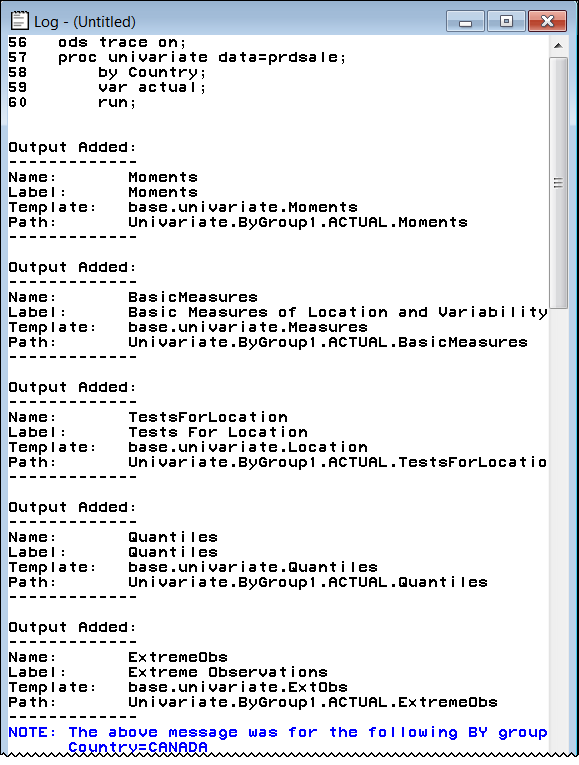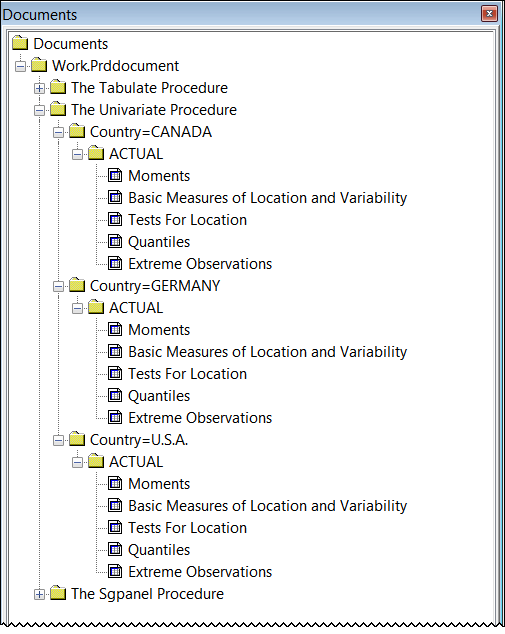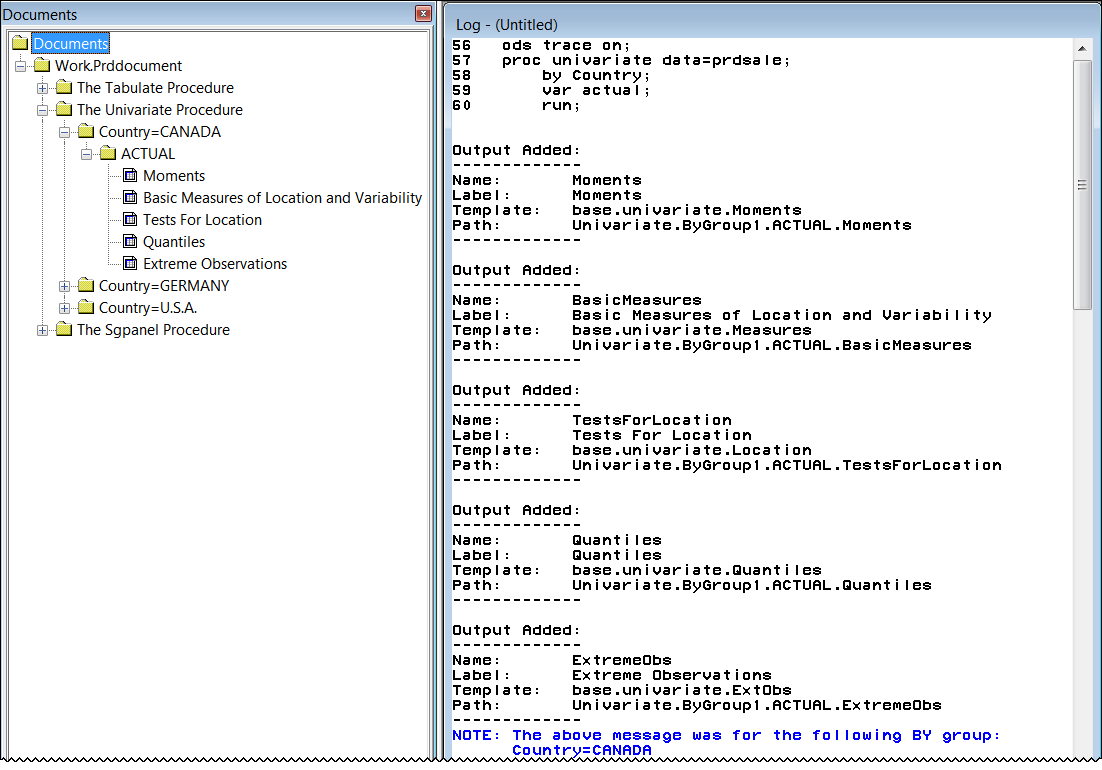Identify the Output Objects
Using the ODS TRACE Statement
The easiest way to identify all
of your output objects is with the ODS TRACE statement. Because the
ODS TRACE statement is a global statement, you can place it anywhere
in your program. By using the ODS TRACE statement, you can see all
of the output objects at a glance. Because you want to select or exclude
output objects created only by PROC UNIVARIATE, place the ODS TRACE
ON statement before the PROC UNIVARIATE step. Place the ODS TRACE
OFF statement after the PROC UNIVARIATE step to stop the generation
of trace information.
ods trace on; proc univariate data=prdsale; by Country; var actual; run; ods trace off;
Trace Output Viewed in the SAS Log

Using the Documents Window
If you have created an
ODS document that contains all of the procedure output, you can view
the labels of the output objects in the Documents window.
Output Objects Viewed in the Documents Window

In the figure below,
you can see that the labels of the output objects in the trace output
correspond to the names given to the output objects in the Documents window.
Comparing the Documents Window and the Trace Output

Copyright © SAS Institute Inc. All Rights Reserved.